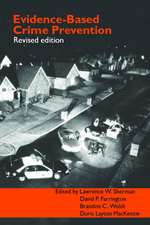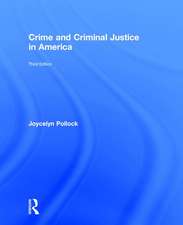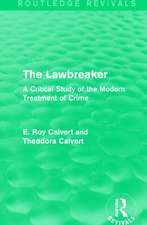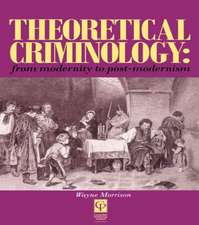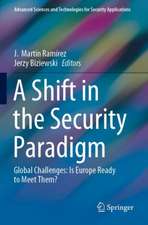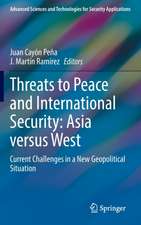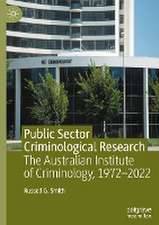Cyberspace: Risks and Benefits for Society, Security and Development: Advanced Sciences and Technologies for Security Applications
Editat de J. Martín Ramírez, Luis A. García-Seguraen Limba Engleză Paperback – 28 iul 2018
| Toate formatele și edițiile | Preț | Express |
|---|---|---|
| Paperback (1) | 480.05 lei 39-44 zile | |
| Springer International Publishing – 28 iul 2018 | 480.05 lei 39-44 zile | |
| Hardback (1) | 646.19 lei 39-44 zile | |
| Springer International Publishing – 22 mai 2017 | 646.19 lei 39-44 zile |
Din seria Advanced Sciences and Technologies for Security Applications
- 18%
 Preț: 903.93 lei
Preț: 903.93 lei - 18%
 Preț: 738.20 lei
Preț: 738.20 lei - 18%
 Preț: 969.61 lei
Preț: 969.61 lei - 18%
 Preț: 791.88 lei
Preț: 791.88 lei - 20%
 Preț: 994.92 lei
Preț: 994.92 lei - 15%
 Preț: 643.65 lei
Preț: 643.65 lei - 5%
 Preț: 672.99 lei
Preț: 672.99 lei - 15%
 Preț: 649.22 lei
Preț: 649.22 lei - 20%
 Preț: 1051.84 lei
Preț: 1051.84 lei - 15%
 Preț: 704.36 lei
Preț: 704.36 lei - 17%
 Preț: 491.11 lei
Preț: 491.11 lei - 20%
 Preț: 1162.37 lei
Preț: 1162.37 lei - 15%
 Preț: 644.95 lei
Preț: 644.95 lei - 20%
 Preț: 934.69 lei
Preț: 934.69 lei - 20%
 Preț: 1273.74 lei
Preț: 1273.74 lei - 20%
 Preț: 991.60 lei
Preț: 991.60 lei - 20%
 Preț: 936.37 lei
Preț: 936.37 lei - 20%
 Preț: 889.12 lei
Preț: 889.12 lei - 15%
 Preț: 704.36 lei
Preț: 704.36 lei - 9%
 Preț: 732.28 lei
Preț: 732.28 lei - 18%
 Preț: 783.98 lei
Preț: 783.98 lei - 18%
 Preț: 1223.88 lei
Preț: 1223.88 lei - 15%
 Preț: 648.42 lei
Preț: 648.42 lei - 18%
 Preț: 1224.36 lei
Preț: 1224.36 lei -
 Preț: 381.43 lei
Preț: 381.43 lei - 20%
 Preț: 1068.44 lei
Preț: 1068.44 lei - 18%
 Preț: 734.59 lei
Preț: 734.59 lei - 15%
 Preț: 586.38 lei
Preț: 586.38 lei - 20%
 Preț: 937.81 lei
Preț: 937.81 lei - 18%
 Preț: 1120.18 lei
Preț: 1120.18 lei - 24%
 Preț: 590.42 lei
Preț: 590.42 lei - 18%
 Preț: 1007.17 lei
Preț: 1007.17 lei - 24%
 Preț: 815.83 lei
Preț: 815.83 lei - 24%
 Preț: 747.51 lei
Preț: 747.51 lei - 20%
 Preț: 937.81 lei
Preț: 937.81 lei - 18%
 Preț: 721.30 lei
Preț: 721.30 lei - 15%
 Preț: 646.75 lei
Preț: 646.75 lei - 15%
 Preț: 698.62 lei
Preț: 698.62 lei - 18%
 Preț: 794.07 lei
Preț: 794.07 lei - 18%
 Preț: 738.06 lei
Preț: 738.06 lei -
 Preț: 388.13 lei
Preț: 388.13 lei
Preț: 480.05 lei
Preț vechi: 600.06 lei
-20% Nou
Puncte Express: 720
Preț estimativ în valută:
91.86€ • 98.23$ • 76.59£
91.86€ • 98.23$ • 76.59£
Carte tipărită la comandă
Livrare economică 14-19 aprilie
Preluare comenzi: 021 569.72.76
Specificații
ISBN-13: 9783319855349
ISBN-10: 3319855344
Pagini: 281
Ilustrații: XVI, 281 p. 17 illus., 13 illus. in color.
Dimensiuni: 155 x 235 mm
Ediția:Softcover reprint of the original 1st ed. 2017
Editura: Springer International Publishing
Colecția Springer
Seria Advanced Sciences and Technologies for Security Applications
Locul publicării:Cham, Switzerland
ISBN-10: 3319855344
Pagini: 281
Ilustrații: XVI, 281 p. 17 illus., 13 illus. in color.
Dimensiuni: 155 x 235 mm
Ediția:Softcover reprint of the original 1st ed. 2017
Editura: Springer International Publishing
Colecția Springer
Seria Advanced Sciences and Technologies for Security Applications
Locul publicării:Cham, Switzerland
Cuprins
Part I: Cyberspace.- On how the Cyberspace arose to fulfill theoretical physicists' needs and eventually changed the world: Personal recallings and a practitioner's perspective.- Narrative mapping of cyberspace. Context and consequences.- A Conceptual and Legal Approach to The Cyberspace: The dilemma security vs. Freedom.- The digital revolution in underdeveloped countries: brief analysis of the Dominican Republic.- Business strategy in the digital era. Digital transformation, disruption and cybersecurity.- Impact of cyberspace on individual and group security – a human developmental psychology approach.- Part II: Cybersecurity.- Cyberspace: A platform for organized crime.- Some Criminal Aspects of Cybersecurity.- The situation and evolution of the managed services of Cybersecurity, towards 3.0 and beyond….- Collaboration of private investigation with public institutions within the Spanish cybersecurity strategy. How private investigation gathers proof on cyber delinquency.- Psychosociological characteristics of cybercrime.- Use of cyberspace for terrorist purposes.- Mythology of Cyber-crime – Insecurity & Governance in Cyberspace: some critical perspectives.- Part III: Cyberwarfare.
The Tallinn Manual and Jus ad Bellum: Some critical notes.- War-like activities in the cyberspace: Applicability of the Law of Armed Conflicts.-
A Negotiation on Cyber warfare.-
Security of Cyber-space in Nuclear Facilities.-
Can cyber warfare prevent wars?.-
Epilogue.- L. A. García-Segura.
<
A Negotiation on Cyber warfare.-
Security of Cyber-space in Nuclear Facilities.-
Can cyber warfare prevent wars?.-
Epilogue.- L. A. García-Segura.
<
Recenzii
“This book, an edited volume by J. Martín Ramírez and Luis A. García-Segura, tries to outline the various risks and benefits of cyberspace. … this book has very good information on various aspects of cyberspace and will be useful for graduate students, researchers, lawmakers, and practitioners who work in cybersecurity.” (Computing Reviews, November, 2017)
Notă biografică
J. Martin Ramirez is Chair of the Center for Conflict Studies at Universidad Nebrija. He is also Fellow of the World Academy of Art and Science and Chair of CICA International and of the Spanish Pugwash Movement (Peace Nobel Price 1995). He studied Medicine, Humanities, and Law, obtaining a PhD degree in Medicine and Surgery (Neurosciences) and in Philosophy (Education) as well as three Diplomas and a Master in National Defense at the Spanish CESEDEN. Research Fellow of International Security Program of the Harvard University and Visiting Fellow of the Hoover Institution on War, Revolution and Peace, Stanford University, probably the most important left-leaned and right-leaned American think-tanks, respectively. Several times official of the Boarding Counsel of the International Society for Research on Aggression (ISRA), he is on the Advisory Board of the Society for Terrorism Research and of the Professors World Peace Academy, and Fellow of the World Academy of Art and Sciences, and has a Professional Award on Aggression and Inter-ethnic Conflicts by the East-West Center, established by the United States Congress, among others. Dr. Martín Ramírez is author of more than 450 scientific publications, among books and articles, in more than ten languages. He has also been Head of the Complutense Research Group on Sociopsychobiology of Aggression, Head of the Departments of Psychobiology at Seville and Complutense Universities, and Director of the Cabinet of the Rector at the Madrid Autonomous University.
Luis A. García Segura studied Law, with a Masters Degree in Business Law and a PhD in Social Sciences from the University of Nebrija. He is the coordinator of the Centre on Conflict Studies (Chair Nebrija-Santander). He has worked for the public and private sectors in Education, Law and ICT projects. He is currently a bar member of the Ilustre Colegio de Abogados de Madrid (ICAM) and an Associate member of the American Bar Association(ABA).
Luis A. García Segura studied Law, with a Masters Degree in Business Law and a PhD in Social Sciences from the University of Nebrija. He is the coordinator of the Centre on Conflict Studies (Chair Nebrija-Santander). He has worked for the public and private sectors in Education, Law and ICT projects. He is currently a bar member of the Ilustre Colegio de Abogados de Madrid (ICAM) and an Associate member of the American Bar Association(ABA).
Textul de pe ultima copertă
This book covers many aspects of cyberspace, emphasizing not only its possible ‘negative’ challenge as a threat to security, but also its positive influence as an efficient tool for defense as well as a welcome new factor for economic and industrial production. Cyberspace is analyzed from quite different and interdisciplinary perspectives, such as: conceptual and legal, military and socio-civil, psychological, commercial, cyber delinquency, cyber intelligence applied to public and private institutions, as well as the nuclear governance.
Caracteristici
Represents almost all continents and cultures, with contributions from a unique mix of international experts Presents both a public and a private sector approach Covers threats as well as opportunities Includes supplementary material: sn.pub/extras

